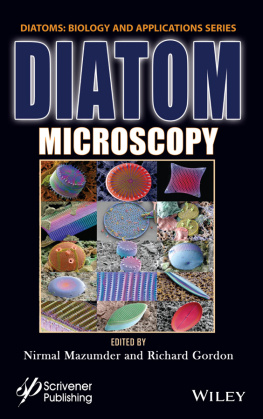Nobuhiko Yamamoto - Single Molecule Microscopy in Neurobiology
Here you can read online Nobuhiko Yamamoto - Single Molecule Microscopy in Neurobiology full text of the book (entire story) in english for free. Download pdf and epub, get meaning, cover and reviews about this ebook. year: 2020, publisher: Human, genre: Home and family. Description of the work, (preface) as well as reviews are available. Best literature library LitArk.com created for fans of good reading and offers a wide selection of genres:
Romance novel
Science fiction
Adventure
Detective
Science
History
Home and family
Prose
Art
Politics
Computer
Non-fiction
Religion
Business
Children
Humor
Choose a favorite category and find really read worthwhile books. Enjoy immersion in the world of imagination, feel the emotions of the characters or learn something new for yourself, make an fascinating discovery.
- Book:Single Molecule Microscopy in Neurobiology
- Author:
- Publisher:Human
- Genre:
- Year:2020
- Rating:4 / 5
- Favourites:Add to favourites
- Your mark:
- 80
- 1
- 2
- 3
- 4
- 5
Single Molecule Microscopy in Neurobiology: summary, description and annotation
We offer to read an annotation, description, summary or preface (depends on what the author of the book "Single Molecule Microscopy in Neurobiology" wrote himself). If you haven't found the necessary information about the book — write in the comments, we will try to find it.
Single Molecule Microscopy in Neurobiology — read online for free the complete book (whole text) full work
Below is the text of the book, divided by pages. System saving the place of the last page read, allows you to conveniently read the book "Single Molecule Microscopy in Neurobiology" online for free, without having to search again every time where you left off. Put a bookmark, and you can go to the page where you finished reading at any time.
Font size:
Interval:
Bookmark:

For further volumes: http://www.springer.com/series/7657
Neuromethodspublishes cutting-edge methods and protocols in all areas of neuroscience as well as translational neurological and mental research. Each volume in the series offers tested laboratory protocols, step-by-step methods for reproducible lab experiments and addresses methodological controversies and pitfalls in order to aid neuroscientists in experimentation.Neuromethodsfocuses on traditional and emerging topics with wide-ranging implications to brain function, such as electrophysiology, neuroimaging, behavioral analysis, genomics, neurodegeneration, translational research and clinical trials.Neuromethodsprovides investigators and trainees with highly useful compendiums of key strategies and approaches for successful research in animal and human brain function including translational bench to bedside approaches to mental and neurological diseases.

This Humana imprint is published by the registered company Springer Science+Business Media, LLC, part of Springer Nature.
The registered company address is: 1 New York Plaza, New York, NY 10004, U.S.A.
Experimental life sciences have two basic foundations: concepts and tools. The Neuromethods series focuses on the tools and techniques unique to the investigation of the nervous system and excitable cells. It will not, however, shortchange the concept side of things as care has been taken to integrate these tools within the context of the concepts and questions under investigation. In this way, the series is unique in that it not only collects protocols but also includes theoretical background information and critiques which led to the methods and their development. Thus it gives the reader a better understanding of the origin of the techniques and their potential future development. The Neuromethods publishing program strikes a balance between recent and exciting developments like those concerning new animal models of disease, imaging, in vivo methods, and more established techniques, including, for example, immunocytochemistry and electrophysiological technologies. New trainees in neurosciences still need a sound footing in these older methods in order to apply a critical approach to their results.
Under the guidance of its founders, Alan Boulton and Glen Baker, the Neuromethods series has been a success since its first volume published through Humana Press in 1985. The series continues to flourish through many changes over the years. It is now published under the umbrella of Springer Protocols. While methods involving brain research have changed a lot since the series started, the publishing environment and technology have changed even more radically. Neuromethods has the distinct layout and style of the Springer Protocols program, designed specifically for readability and ease of reference in a laboratory setting.
The careful application of methods is potentially the most important step in the process of scientific inquiry. In the past, new methodologies led the way in developing new disciplines in the biological and medical sciences. For example, Physiology emerged out of Anatomy in the nineteenth century by harnessing new methods based on the newly discovered phenomenon of electricity. Nowadays, the relationships between disciplines and methods are more complex. Methods are now widely shared between disciplines and research areas. New developments in electronic publishing make it possible for scientists that encounter new methods to quickly find sources of information electronically. The design of individual volumes and chapters in this series takes this new access technology into account. Springer Protocols makes it possible to download single protocols separately. In addition, Springer makes its print-on-demand technology available globally. A print copy can therefore be acquired quickly and for a competitive price anywhere in the world.
For the past quarter of a century, many gene products, RNAs and proteins, have been identified to operate in the brain for physiological, anatomical, biochemical, and developmental functions. For instance, genetic and molecular biological approaches have identified various synaptic proteins and uncovered their essential roles in synaptic function. Those proteins localize and accumulate in either the pre- or post-synaptic regions, according to their functions. The precise localization of these proteins is inevitable for normal synaptic transmission and is dependent on the intracellular transport systems. Various RNAs and proteins are shown to be transported to their specific destinations in the axons and in the dendrites. The next intriguing issue is how these molecules are expressed and located in specific subcellular regions and function by interacting with other molecules. Conventional biochemical and molecular biological approaches might be insufficient to solve these problems in the highly heterogenous environment of the CNS. There are various cell types. Each cell of the same cell type, or even each synapse in the same neuron, would behave differently according to the neuronal connections and firing and synaptic activities. Therefore, it would be required to examine how the molecules of interest localize and function in specific subcellular locations in a neuron and how it changes dynamically by the physiological or external stimuli or development. Single-molecule imaging techniques enable us to examine the details of the localization and the dynamics of the molecules. There are, however, technical hurdles to apply these techniques to living cells, especially to living neuronal cells. In this book, the experts in this field introduce the methodology and technical issues in detail along with their own results. We believe that it would help readers to start their own single-molecule experiments by themselves.
Font size:
Interval:
Bookmark:
Similar books «Single Molecule Microscopy in Neurobiology»
Look at similar books to Single Molecule Microscopy in Neurobiology. We have selected literature similar in name and meaning in the hope of providing readers with more options to find new, interesting, not yet read works.
Discussion, reviews of the book Single Molecule Microscopy in Neurobiology and just readers' own opinions. Leave your comments, write what you think about the work, its meaning or the main characters. Specify what exactly you liked and what you didn't like, and why you think so.











